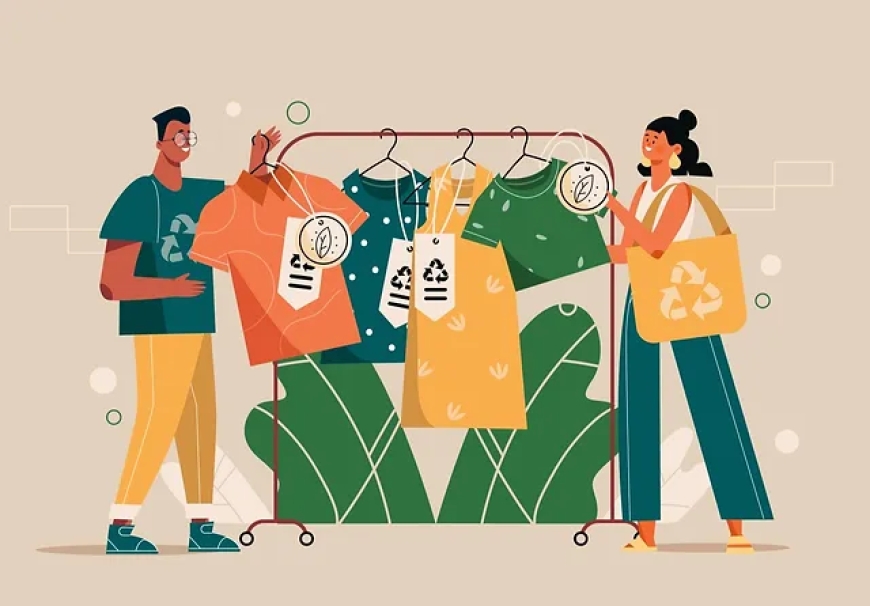The Rise of Sustainable Fashion: Eco-Friendly Shopping Choices
The Rise of Sustainable Fashion: Eco-Friendly Shopping Choices

Sustainable fashion is rapidly transforming the way we think about our wardrobes. As consumers become more aware of the environmental and social impact of their purchasing decisions, the demand for eco-friendly shopping choices is on the rise. This article explores the evolution of sustainable fashion, highlights the importance of eco-conscious shopping, and offers practical tips for making greener fashion choices.
Understanding Sustainable Fashion
What is Sustainable Fashion?
Sustainable fashion refers to clothing, shoes, and accessories that are produced, marketed, and used in the most sustainable manner possible, taking into account both environmental and socio-economic aspects. It aims to reduce the negative impacts of the fashion industry on the planet and society.
Why is it Important?
The fashion industry is one of the largest polluters in the world. It contributes to water pollution, high carbon emissions, and massive amounts of textile waste. Sustainable fashion addresses these issues by promoting ethical production practices, reducing waste, and encouraging the use of eco-friendly materials.
Key Elements of Sustainable Fashion
1. Ethical Production
Ethical fashion ensures that workers are paid fair wages and work in safe conditions. It also involves avoiding harmful practices such as child labor and forced labor.
2. Eco-Friendly Materials
Sustainable fashion brands use materials that have a lower environmental impact. These can include organic cotton, recycled fabrics, bamboo, hemp, and Tencel. These materials require less water, pesticides, and energy to produce.
3. Slow Fashion
Slow fashion is the antithesis of fast fashion. It emphasizes quality over quantity, encouraging consumers to buy fewer but better-quality items that last longer. This approach reduces waste and promotes a more thoughtful consumption pattern.
4. Secondhand and Vintage Shopping
Buying secondhand or vintage clothing extends the life of garments and reduces the demand for new production. Thrift stores, consignment shops, and online platforms offer a wide range of pre-loved items.
5. Repair and Upcycling
Repairing and upcycling old clothes can breathe new life into worn-out items. This practice not only saves money but also reduces textile waste.
Tips for Eco-Friendly Shopping
1. Do Your Research
Before making a purchase, research brands to ensure they follow sustainable practices. Look for certifications such as Fair Trade, GOTS (Global Organic Textile Standard), and B Corp, which indicate a commitment to sustainability.
2. Invest in Quality
Choose quality over quantity. Well-made clothes may be more expensive initially, but they last longer, which reduces the need for frequent replacements and decreases overall consumption.
3. Embrace Secondhand
Thrift stores, consignment shops, and online marketplaces like Poshmark and ThredUp offer a treasure trove of secondhand clothing. Buying secondhand helps reduce waste and gives garments a second life.
4. Choose Eco-Friendly Fabrics
Opt for garments made from organic or recycled materials. These fabrics have a lower environmental footprint compared to conventional materials.
5. Support Ethical Brands
Support brands that are transparent about their production processes and committed to ethical practices. Brands like Patagonia, Everlane, and Reformation are known for their sustainable approaches.
6. Practice Mindful Consumption
Think twice before making a purchase. Ask yourself if you really need the item and if it will add value to your wardrobe. Avoid impulse buying and focus on building a timeless, versatile wardrobe.
7. Care for Your Clothes
Properly caring for your clothes can extend their lifespan. Follow care instructions, avoid overwashing, and repair minor damages promptly to keep your garments in good condition.
The Future of Sustainable Fashion
As awareness about environmental issues grows, the demand for sustainable fashion is expected to increase. Innovations in eco-friendly materials, circular fashion models, and advancements in recycling technologies will continue to drive the industry forward. Consumers, brands, and policymakers all have a role to play in making fashion more sustainable.
Conclusion
The rise of sustainable fashion marks a significant shift towards more eco-friendly shopping choices. By understanding the principles of sustainable fashion and adopting mindful consumption habits, we can all contribute to a more sustainable future. Embrace the change, support ethical brands, and make choices that are kind to both the planet and the people who inhabit it.
What's Your Reaction?














































































